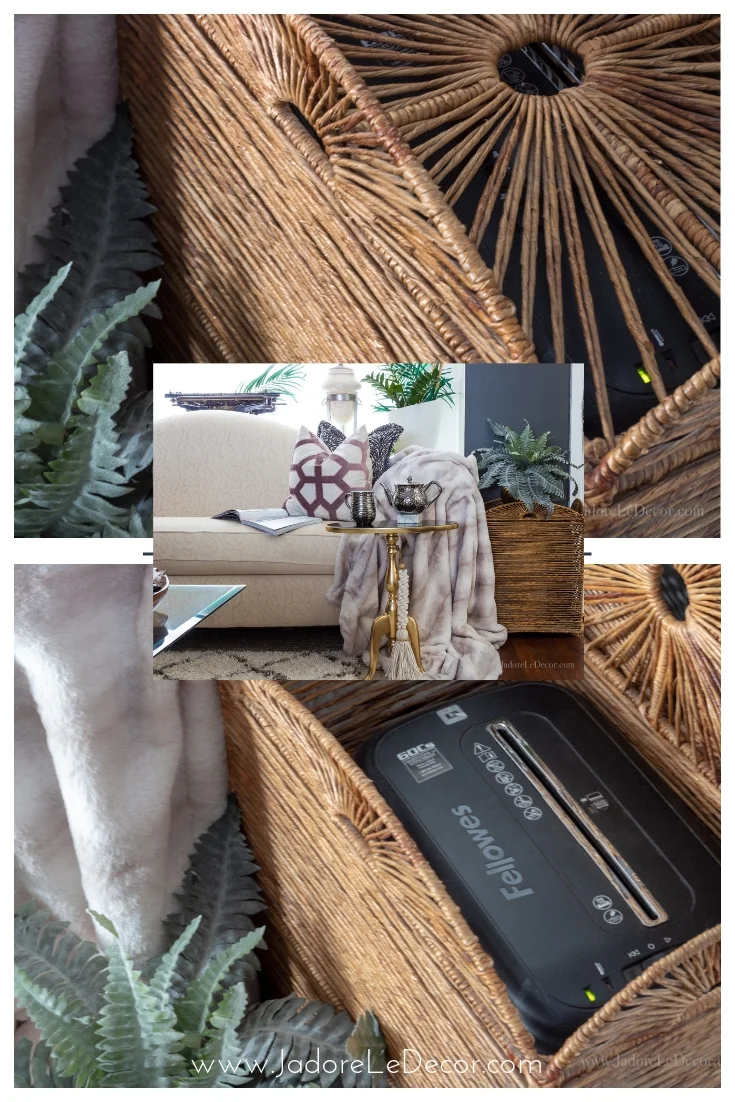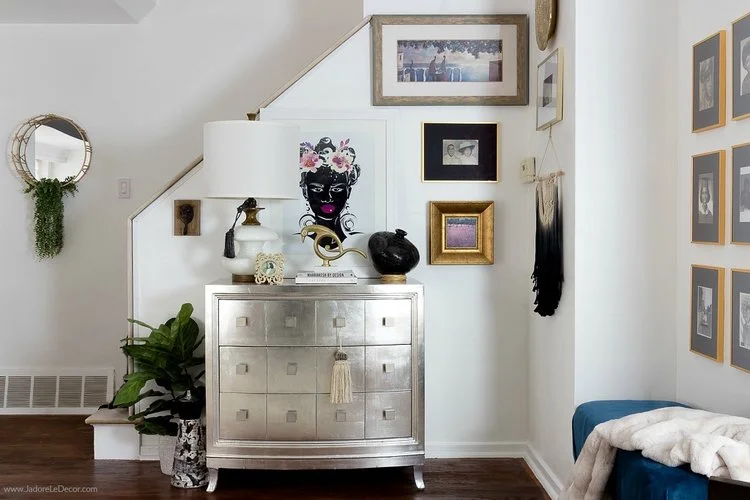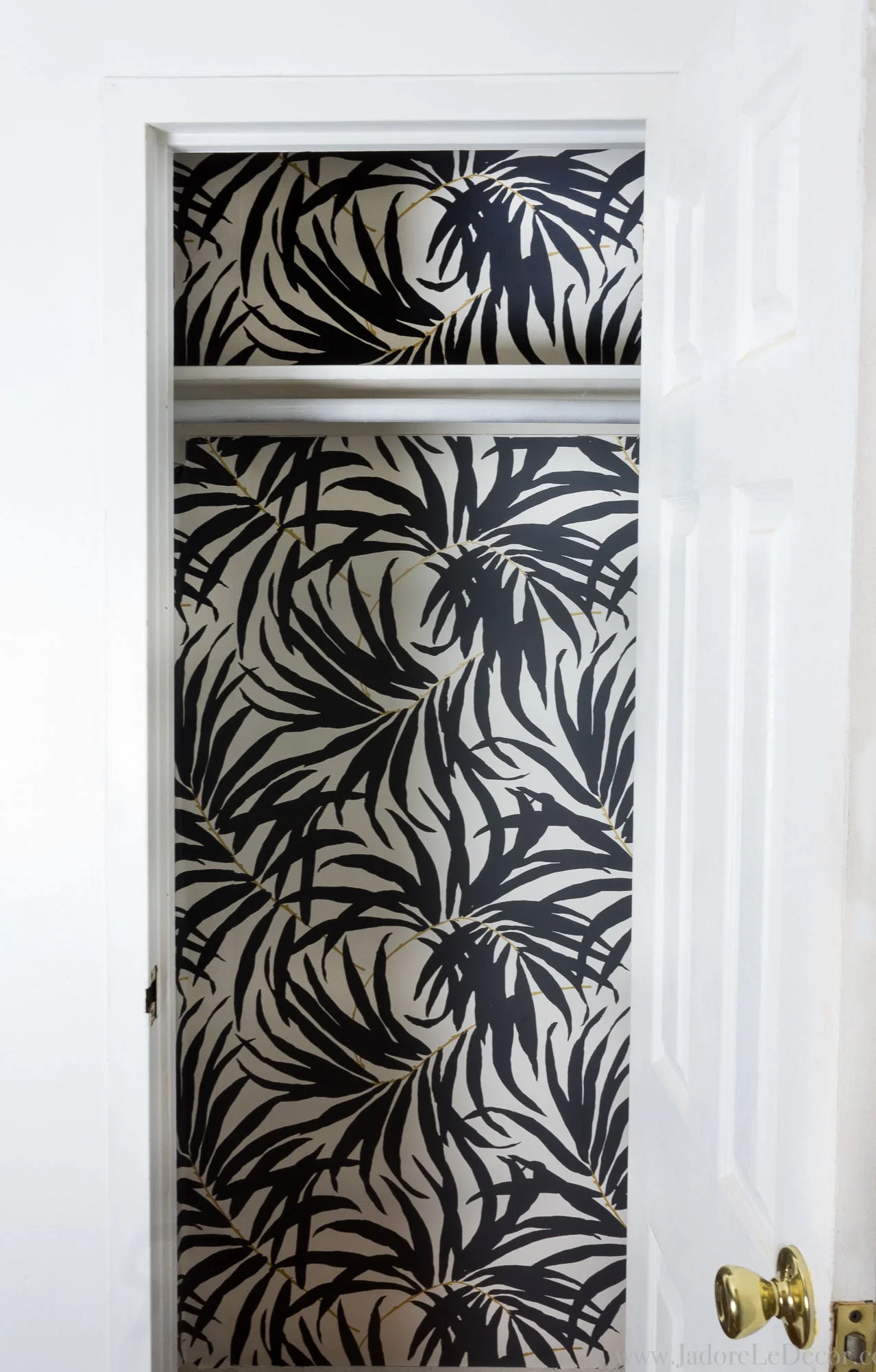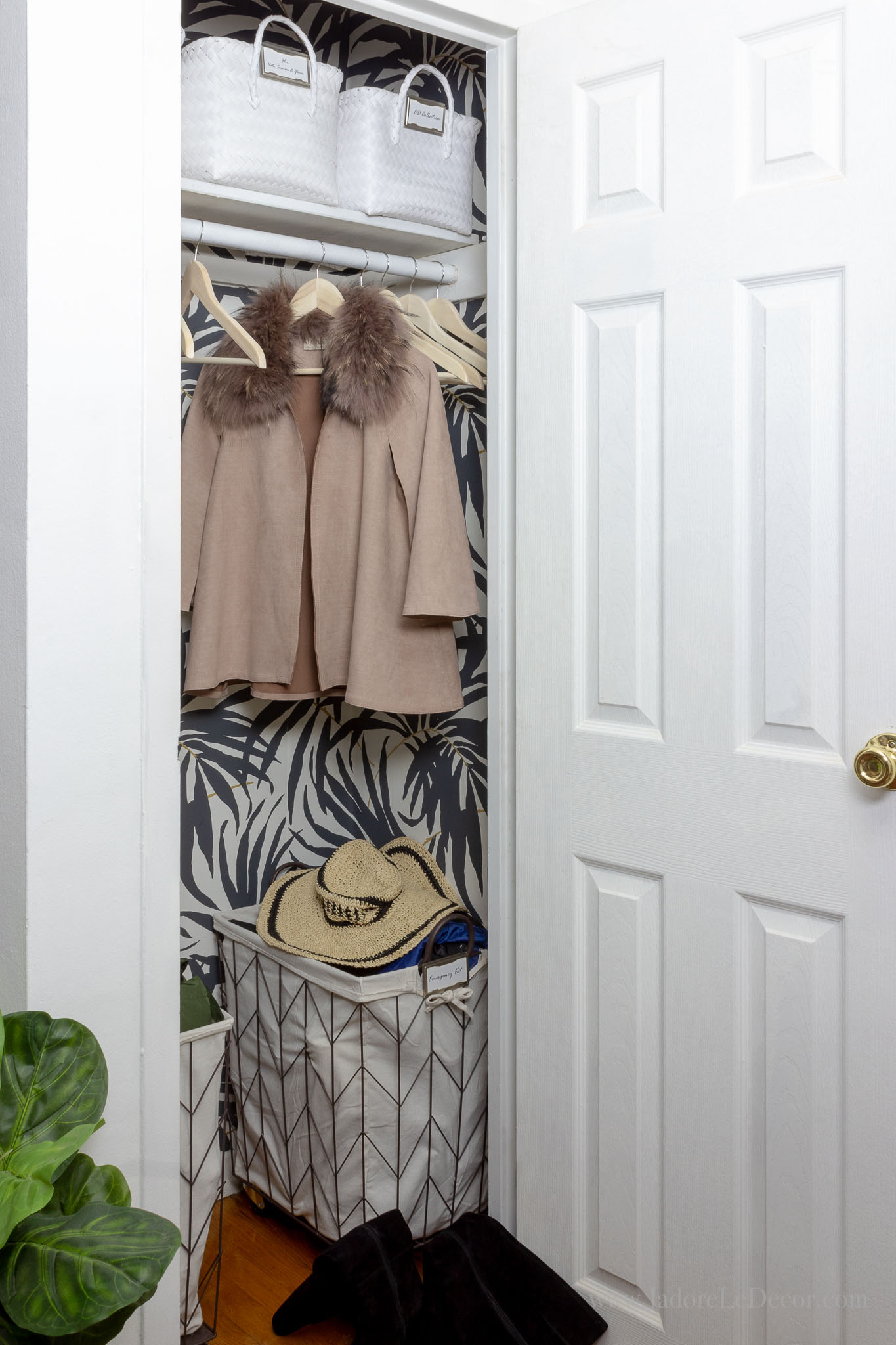Practical Solutions to the Problem of No Entryway
When the front door opens and your guest walks smack dab in the middle of your living room it’s a bit of an awkward moment for everyone. Trust me I know. Whatever the guest is thinking seems to be written all over his face:
Where do I go from here?
Where do I put my shoes?
Is there a place to hang my coat?
Where can I sit while I take off my shoes?
Funny thing is, when an entryway is virtually non-existent, the homeowner will often be thinking the same thing! What’s a homeowner to do when they don’t have a proper entryway? The easy answer is that he or she must create one, then organize it so that it’s function is clear.
Welcome to week 5 of the Whole House Organization Challenge where we’re tidying up the entryway. If your home is anything like mine though, you’ll first have to spend some time creating an entryway. Here’s how to do it.
Affiliate links may be included in this post. This means that should you purchase a linked product, I may receive a small commission, but at no additional cost to you. To read my full disclosure click here.
How to Fake a Functional Entryway
1. Identify the Things and Address Them
Make a list of the things that usually end up getting dumped near your main entryway. That often consists of mail, shoes, bags, keys, coats and hats. We’ll take these one by one.
Sorting the Mail
There will be a bit of bit of overlap here. In this post we addressed the common entryway problem of what to do with the mail. But since my entryway really is in my living room I mentioned this during living room organization week. For those who missed it here it is again. The photo below shows how we hide a shredder in a hamper to tackle the problem of junk mail. I can’t even begin to tell you what a game changer this has been!
Where to Put the Shoes?
The most affordable solution to this problem is to set aside a box or basket where shoes can be tossed. If you can make room for it, designate one basket for every 2 persons in the household. Explain that no one is allowed to go beyond their designated shoe box/basket.
Bags and Purses
Simple wall hooks, a book case or sideboard are all practical places to store purses, bags, briefcases and dog leashes.
Keys
For women, I suggest using a key ring that latches onto the purse strap. I’ve been using one for more than 10 years and it has literally preserved my sanity. Ha! No more spending half my mornings looking for lost keys, only to find them at the bottom of my purse. For guys, a small bowl, just large enough to hold a wallet and keys is sufficient.
“NOTE: It is not recommended to keep keys, purses and wallets near entryways with glass paneled doors. In one instance, an unsavory character detected the homeowner’s keys while passing by on foot. He entered the home and decided to take the family car for a joyride. Not good. ”
2. Define the Area You Want to Serve as the Entryway
Let guests know where they should stand when they enter your home. A rug is an easy way to do that. This simple demarcation immediately tells service persons or even children (well, some children) how far inside your home they are allowed.
Use a bookcase, chest or desk. If there’s room for it, make a place to sit to remove shoes. If there’s not enough space for a chair, an ottoman or small bench is a useful alternative.
3. Hanging the Coats
For those without an entryway closet, beautiful wall mounted hooks are a great solution. The best part is that wall hooks take up ZERO floor space.
What if your small entrance actually has an entryway closet? If that is the case, you will want to pay special attention to the rest of this article. After all this is an organizational post. You’ll be happy to know that I did a bit of homework for this week’s Challenge.
Contrary to what many may think, organization doesn’t always come easily for me. The closet near my entryway has been a source of embarrassment for quite some time now. I was just too lazy to deal with all the stuff going on inside of it. But this year I was determined to do something about it. Here’s what my entryway looked like before I started.
Here is the process I followed to whip it into shape.
a. EMPTY the closet of everything.
b. PURGE and SORT, then ask: Is it too small? Does the item need to be repaired? Is it unusable? Identify the items that need to stay and group them according to kind. Toss or donate the rest.
c. SCRUB the closet walls and floors.
d. MEASURE your space to determine the size of your new storage pieces. Do a dry run of the storage solutions you’ve purchased to make sure everything fits properly.
e. RETURN remaining items to the closet
f. LABEL everything
I took things a step further and wallpapered my closet with a roll I had left over from another project. It was a lot of work moving around in that tiny box let me tell you! I doubt I'll ever do it again. But after 2 hours and a bit of touch up paint, here was my result.
Notice that the rolling carts on the floor of the closet contain emergency kits. No, we're not paranoid. But several years back, the US government made a lot of noise about families not being prepared in cases of a natural disaster. We paid attention. Some people teased us about having these. But suddenly all across the U. S., different regions were facing their own kind of natural disaster. Better to be prepared than not at all.
To consult the list of recommendations on what should be included in your kit click here. For ready-made kits visit QuakeKare.com.
Never in a million years did I ever think I could have a welcoming entryway, let alone a super chic coat closet! This is certainly proof that if I can do it, so can you.
Please tell me in the comments below, what did you think of the tips and ideas presented in this post?




























